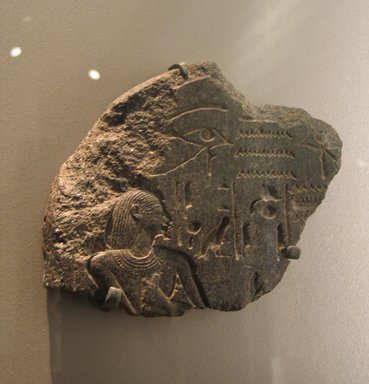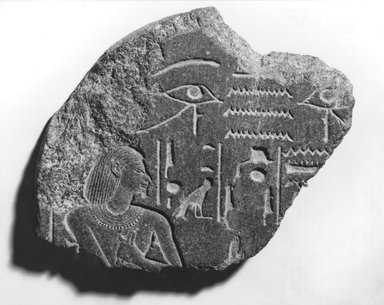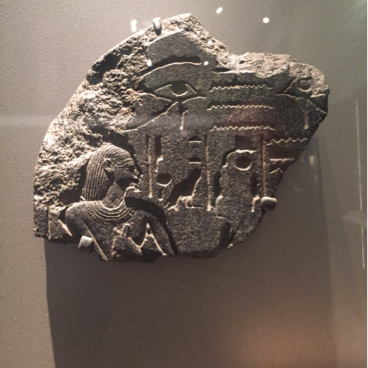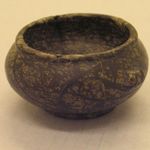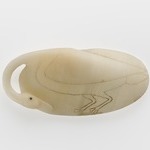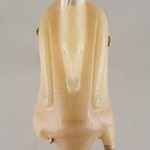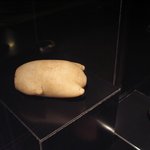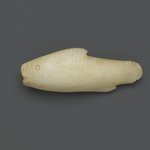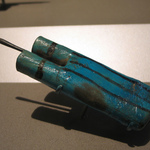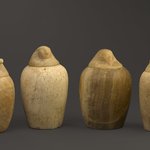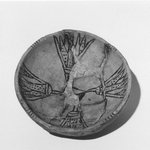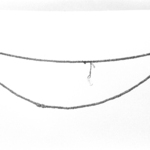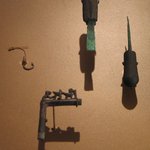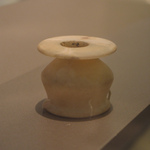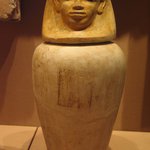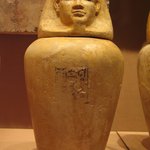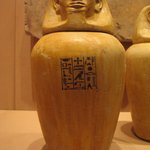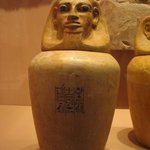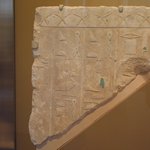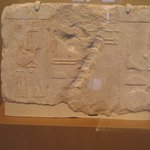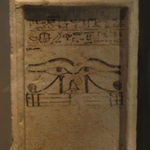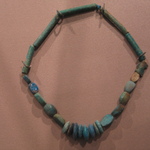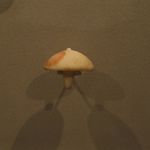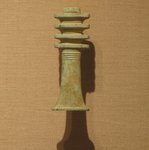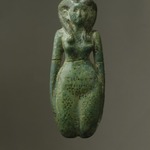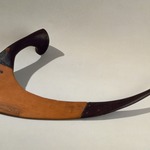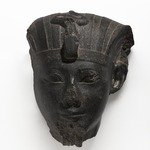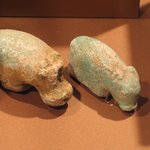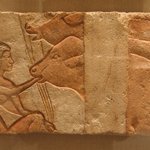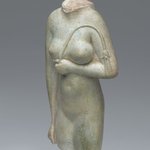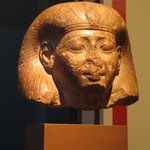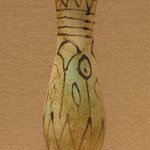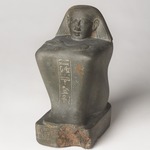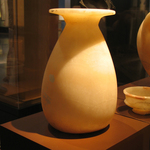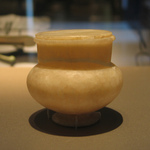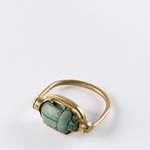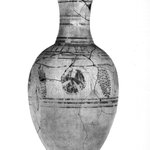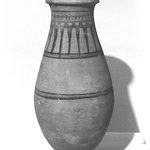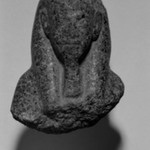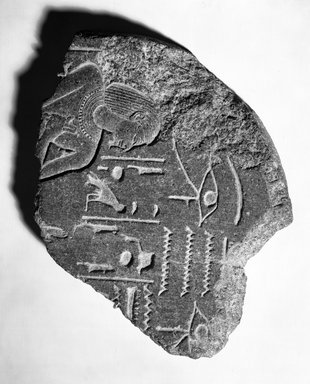

Part of a Stela of Teti-em-Re, ca. 1479–1425 B.C.E. Black granite, 7 1/4 x 9 x 1 1/8 in. (18.4 x 22.9 x 2.9 cm). Brooklyn Museum, Charles Edwin Wilbour Fund, 60.95. Creative Commons-BY (Photo: Brooklyn Museum, 60.95_NegA_bw_SL4.jpg)
Part of a Stela of Teti-em-Re
Egyptian, Classical, Ancient Near Eastern Art
On View: Egyptian Orientation Gallery, 3rd Floor
Under the rounded top of this funerary stela, decorated with wedjat-eyes and other protective symbols, three short columns of hieroglyphs give the titles of a man named Teti-em-Re. The original carving depicted Teti-em-Re seated before an offering table with a rolled and folded cloth in one hand. The short chin beard, simple shoulder-length wig, and refined, delicate features are most frequently found in reliefs dating to the time of the joint reign of Hatshepsut and Thutmose III, when this stela was probably made.
MEDIUM
Black granite
DATES
ca. 1479–1425 B.C.E.
DYNASTY
Dynasty 18
PERIOD
New Kingdom
DIMENSIONS
7 1/4 x 9 x 1 1/8 in. (18.4 x 22.9 x 2.9 cm) (show scale)



COLLECTIONS
Egyptian, Classical, Ancient Near Eastern Art
ACCESSION NUMBER
60.95
CREDIT LINE
Charles Edwin Wilbour Fund
CATALOGUE DESCRIPTION
Upper portion of a round-topped stela. Black granite. Preserved is the upper portion of a male figure, probably a seated figure. The man wears a striated wig, broad collar, and short beard. His eyes are long and tilted; brows and cosmetic lines are executed in relief. The figure itself, as well as the other elements of decoration on this stela, is executed in a shallow sunk relief. Above, and slightly to the right of the figure, are partially preserved wedjat eyes flanking a shen. Below the shen are three 'n' signs. Before the figure are the partially preserved remains of three columns of text. These give the man’s name as Tti-m-r'.
Condition: Incomplete. Left edge badly chipped. Broken in two and mended.
EXHIBITIONS
MUSEUM LOCATION
This item is on view in Egyptian Orientation Gallery, 3rd Floor
CAPTION
Part of a Stela of Teti-em-Re, ca. 1479–1425 B.C.E. Black granite, 7 1/4 x 9 x 1 1/8 in. (18.4 x 22.9 x 2.9 cm). Brooklyn Museum, Charles Edwin Wilbour Fund, 60.95. Creative Commons-BY (Photo: Brooklyn Museum, 60.95_NegA_bw_SL4.jpg)
IMAGE
overall, 60.95_NegA_bw_SL4.jpg. Brooklyn Museum photograph
"CUR" at the beginning of an image file name means that the image was created by a curatorial staff member. These study images may be digital point-and-shoot photographs, when we don\'t yet have high-quality studio photography, or they may be scans of older negatives, slides, or photographic prints, providing historical documentation of the object.
RIGHTS STATEMENT
Creative Commons-BY
You may download and use Brooklyn Museum images of this three-dimensional work in accordance with a Creative Commons license. Fair use, as understood under the United States Copyright Act, may also apply.
Please include caption information from this page and credit the Brooklyn Museum. If you need a high resolution file, please fill out our online application form (charges apply).
For further information about copyright, we recommend resources at the United States Library of Congress, Cornell University, Copyright and Cultural Institutions: Guidelines for U.S. Libraries, Archives, and Museums, and Copyright Watch.
For more information about the Museum's rights project, including how rights types are assigned, please see our blog posts on copyright.
If you have any information regarding this work and rights to it, please contact copyright@brooklynmuseum.org.
RECORD COMPLETENESS
Not every record you will find here is complete. More information is available for some works than for others, and some entries have been updated more recently. Records are frequently reviewed and revised, and we welcome any additional information you might have.
